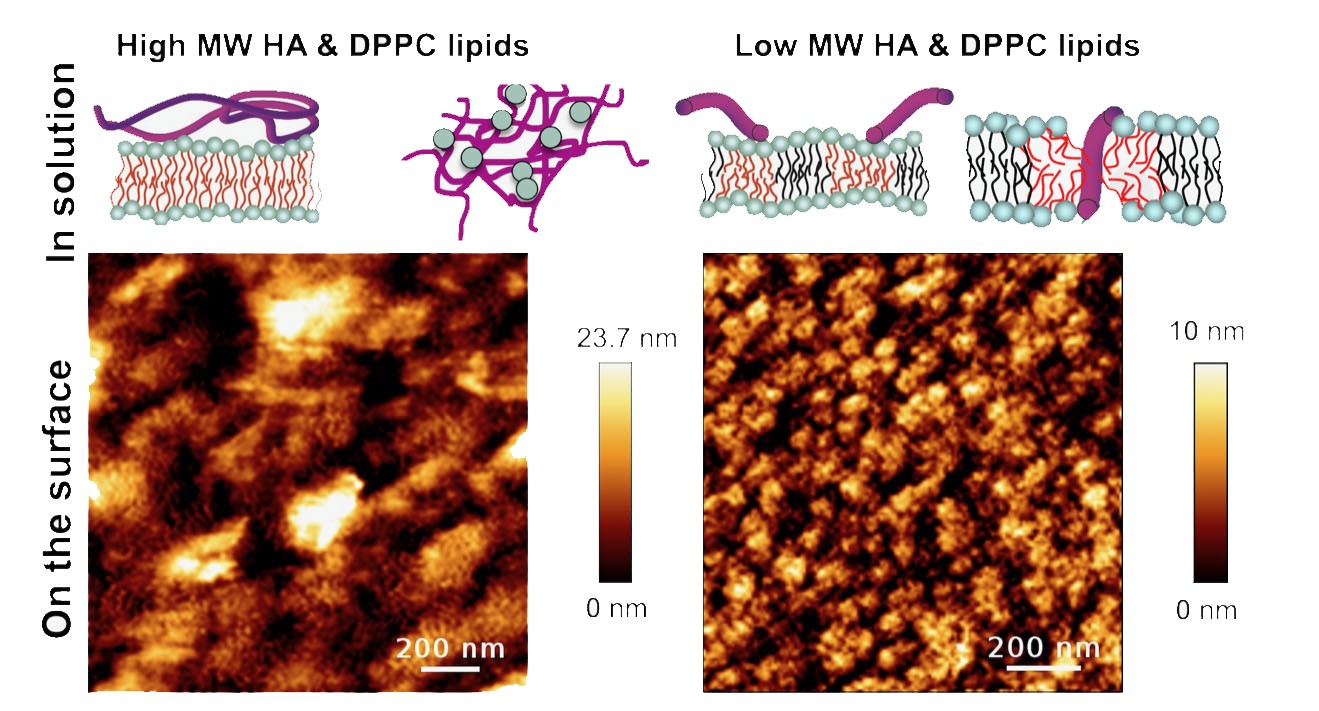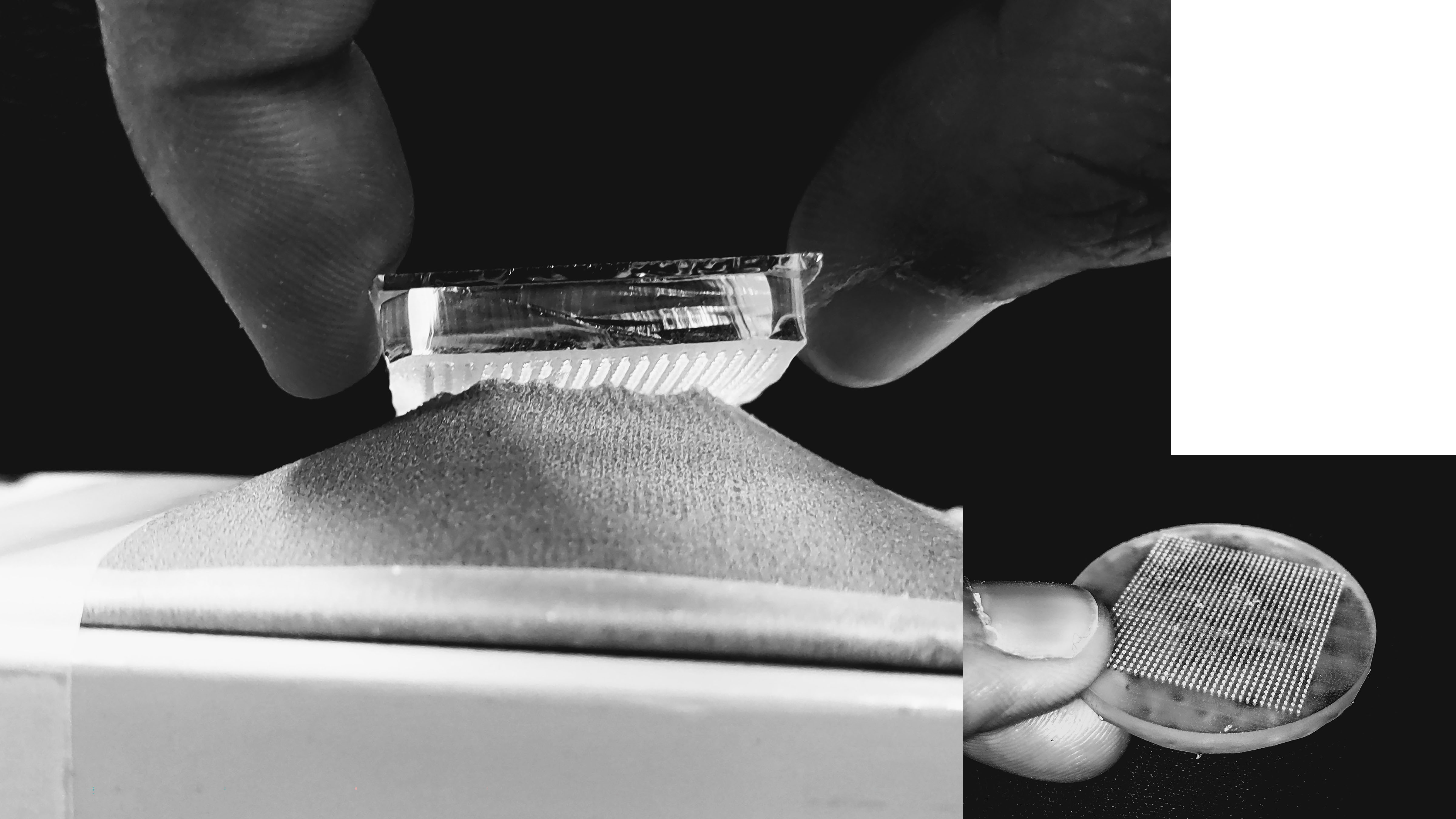In Biointerphases, researchers develop a fabrication method to increase the efficacy and longevity of membrane separation technology. The team created a nanofibrous membrane with electrospinning, in which a liquid polymer droplet is electrified and stretched to make fibers, and increased the roughness of the membrane surface by loading it with silver nanoparticles. In water, this rough surface promotes a stable layer of water, which acts as a barrier to prevent oil droplets from entering the membrane. The technology is greater than 99% effective at separating a petroleum ether-in-water emulsion.
Tag: Biointerphases

Composition of Joint Lubricant Potential Culprit Behind Osteoarthritis
The exact mechanism of cartilage breakdown in osteoarthritis is unknown, but damage from mechanical stress with insufficient self-repair is believed to be the main culprit. The composition of synovial fluid, or joint lubricant, changes significantly: The concentration and molecular weight of hyaluronic acid tends to decrease. In Biointerphases, researchers explore the disease-driven breakdown of hyaluronan and the mechanistic implications of these changes on the lubrication and subsequent wear of joints.
Brain Cell Membranes’ Lipids May Play Big Role in Alzheimer’s Progression
Links between lipid imbalance and disease have been established, in which lipid changes increase the formation of amyloid plaques, a hallmark of Alzheimer’s disease. This imbalance inspired researchers to explore the role of lipids comprising the cellular membranes of brain cells. In Biointerphases, the researchers report on the significant role lipids may play in regulating C99, a protein within the amyloid pathway, and disease progression.

Fastener with Microscopic Mushroom Design Holds Promise
A Velcro-like fastener with a microscopic design that looks like tiny mushrooms could mean advances for everyday consumers and scientific fields. Currently available fasteners are called hook and loop fasteners and require harder, stiff material. In Biointerphases, researchers describe a design that can use softer materials and still be strong enough to work. The team believes a 3D mushroom design can be made with softer, more flexible materials and provide sufficient interlocking force on the fabric and hold strong.